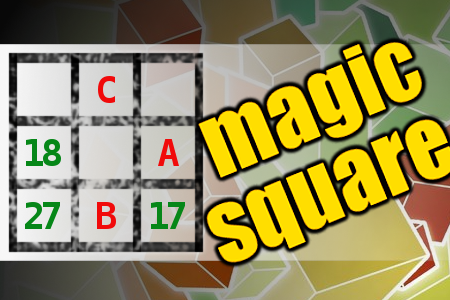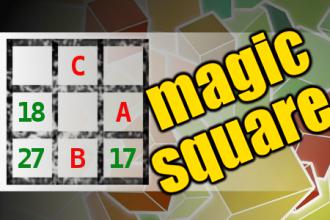MAGIC SQUARE: Calculate A+B+C
The aim is to place the some numbers from the list (7, 14, 17, 18, 27, 30, 31, 48, 51, 52) into the empty squares and squares marked with A, B an C. Sum of each row and column should be equal. All the numbers of the magic square must be different. Find values for A, B, and C. Solution is A+B+C.Correct answers: 0
#brainteasers #math #magicsquare

A young banker decided to get...
A young banker decided to get his first tailor-made suit. So he went tothe finest tailor in town and got measured for a suit. A week later hewent in for his first fitting. He put on the suit and he looked fabulous,he felt that in this suit he can do business.
As he was preening himself in front of the mirror he reached down to puthis hands in the pockets and to his surprise he noticed that there were nopockets. He mentioned this to the tailor who asked him, "Didn't you tellme you were a banker?"
The young man answered, "Yes, I did."
To this the tailor said, "Who ever heard of a banker with his hands in hisown pockets?"
As he was preening himself in front of the mirror he reached down to puthis hands in the pockets and to his surprise he noticed that there were nopockets. He mentioned this to the tailor who asked him, "Didn't you tellme you were a banker?"
The young man answered, "Yes, I did."
To this the tailor said, "Who ever heard of a banker with his hands in hisown pockets?"

